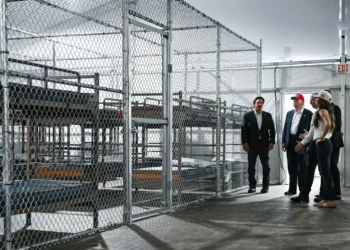In 2025, the logistics and tech industries are bracing for significant job cuts as major players like UPS and Amazon undergo restructuring.

This wave of layoffs is expected to have far-reaching implications for the global economy, impacting not just the companies involved but also their vast networks of suppliers, contractors, and customers.
The reasons behind these job cuts are complex, driven by a mix of factors including economic pressures, technological advancements, and shifts in consumer behavior.
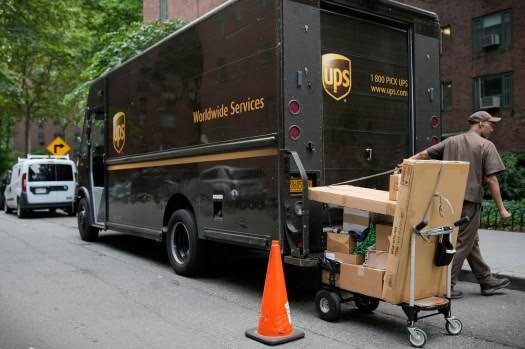
Key Takeaways
- The logistics and tech sectors are facing significant layoffs in 2025.
- UPS and Amazon are among the major companies affected.
- Economic pressures and technological changes are driving the job cuts.
- The impact will be felt across the global economy.
- Suppliers, contractors, and customers will also be affected.
The Current State of UPS and Amazon Workforce
The workforce dynamics at UPS and Amazon are undergoing a significant shift, reflecting broader changes in the logistics industry. Understanding the current state of their workforce is crucial for grasping the implications of the upcoming layoffs.
UPS Employment Numbers Before the Cuts
At the end of 2024, UPS had approximately 490,000 employees, a decrease from 500,000 a year earlier. This reduction indicates a trend that was already underway before the announced layoffs.
Amazon’s Workforce Overview
Amazon, on the other hand, has been expanding its workforce over the years. As of 2024, Amazon employed over 1.5 million people worldwide, making it one of the largest employers in the logistics and tech sectors.
Industry Position of Both Companies
Both UPS and Amazon play critical roles in the logistics industry. UPS is a traditional shipping giant, while Amazon has been rapidly expanding its delivery capabilities. The table below highlights their positions:
| Company | Number of Employees | Primary Focus |
|---|---|---|
| UPS | 490,000 | Traditional Shipping |
| Amazon | 1,500,000+ | E-commerce and Delivery |
Breaking Down the UPS Layoffs2025
The logistics giant, UPS, is bracing for a substantial downsizing effort in 2025, aiming to reduce its workforce by 20,000 positions. This significant restructuring is part of UPS’s strategic realignment to adapt to the changing logistics and delivery landscape.
Scale of the 20,000 Job Cuts
The planned reduction of 20,000 jobs represents a significant percentage of UPS’s U.S. workforce. This move is indicative of the company’s efforts to streamline operations and enhance efficiency in a competitive market.
Key Statistics:
- 20,000 jobs to be cut
- Majority of layoffs in the U.S. network
- Part of a larger restructuring effort
Geographic Distribution of Layoffs
The layoffs are expected to be distributed across various regions, with a focus on areas with overlapping delivery networks and redundant positions. Major hubs and facilities are likely to be affected.
Job Categories Most Affected
While specific job categories have not been detailed, it is anticipated that positions related to delivery, sorting, and customer service will be among those impacted. The exact distribution will depend on UPS’s operational needs and strategic priorities.
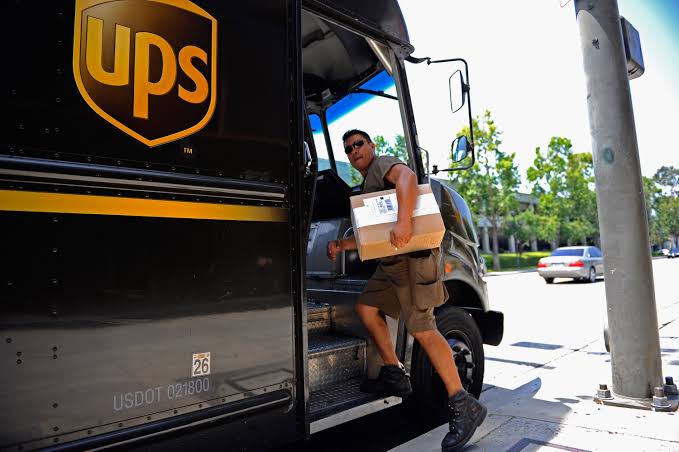
Timeline for Implementation
UPS plans to implement these layoffs throughout 2025, with the exact timeline potentially influenced by operational requirements and the need to minimize disruption to services. The company is expected to provide support to affected employees and implement measures to ensure a smooth transition.
As UPS navigates this significant restructuring, the company remains committed to maintaining its high standards of service and operational excellence.
Amazon’s Parallel Workforce Reductions
In a move that reflects the changing dynamics of the e-commerce and logistics sectors, Amazon is reducing its workforce. This decision comes as part of a broader industry trend, with UPS also announcing significant layoffs. Amazon’s layoffs are estimated to affect over 9,000 employees in 2025.

Size and Scope of Amazon’s Layoffs
The scale of Amazon’s layoffs is substantial, with more than 9,000 jobs being cut across various divisions. This move is part of Amazon’s effort to streamline operations and adapt to the evolving e-commerce landscape. The layoffs are expected to impact multiple areas of the company, from logistics and delivery to corporate functions.
Key Areas Affected:
- Logistics and Delivery
- Corporate Functions
- Technology and Development
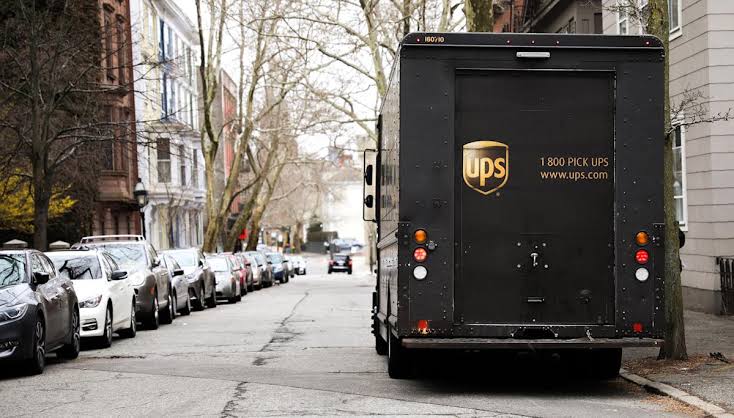
Targeted Divisions and Locations
Amazon’s layoffs are not uniform across the company; certain divisions and locations are being targeted more than others. The company’s logistics and delivery network, which has seen significant expansion during the pandemic, is among the areas undergoing adjustments. Additionally, some corporate functions are being streamlined to improve efficiency.
Locations impacted include major hubs and facilities across the United States, with some international locations also affected.
Comparison to Previous Amazon Restructuring
Amazon has a history of restructuring its workforce in response to changing market conditions. The 2025 layoffs are part of this ongoing process, reflecting the company’s efforts to stay competitive in a rapidly evolving e-commerce and logistics landscape. Compared to previous restructuring efforts, the current layoffs indicate a significant adjustment in Amazon’s operational strategy.
By analyzing these changes, we can better understand the broader implications for the industry and the future of employment in the logistics and e-commerce sectors.
Economic Factors Driving UPS Layoffs Amazon Workforce Reductions
The economic landscape has significantly shifted for UPS and Amazon, leading to substantial layoffs in 2025. As the market continues to evolve, understanding the underlying economic factors driving these changes is crucial.
Post-Pandemic Market Adjustments
The COVID-19 pandemic led to an unprecedented surge in e-commerce demand, which has since normalized. As a result, companies like UPS and Amazon are adjusting their operations to align with the new market reality. Post-pandemic market adjustments involve recalibrating business strategies to fit the changed consumer behavior and economic conditions.
The normalization of e-commerce demand has meant that UPS and Amazon must optimize their operations to remain competitive. This includes streamlining logistics, investing in technology, and making strategic workforce adjustments.
E-commerce Trends Affecting Delivery Services
E-commerce trends continue to shape the delivery services landscape. With consumers expecting faster and more flexible delivery options, UPS and Amazon are under pressure to innovate and adapt. The rise of same-day delivery and the increasing importance of last-mile delivery are key trends influencing their strategies.
The table below summarizes the key e-commerce trends affecting UPS and Amazon:
| Trend | Impact on UPS | Impact on Amazon |
|---|---|---|
| Same-day delivery | Increased investment in logistics | Expansion of Prime delivery services |
| Last-mile delivery | Partnerships with local delivery services | Growth of Amazon Flex program |
| E-commerce growth | Higher demand for delivery services | Increased reliance on third-party sellers |
Competitive Pressures in the Logistics Sector
The logistics sector is highly competitive, with UPS and Amazon competing not only with each other but also with other delivery companies. Competitive pressures are driving these companies to innovate and reduce costs, including through workforce reductions.
As the logistics landscape continues to evolve, UPS and Amazon must balance the need to cut costs with the necessity of investing in technology and workforce development to remain competitive.
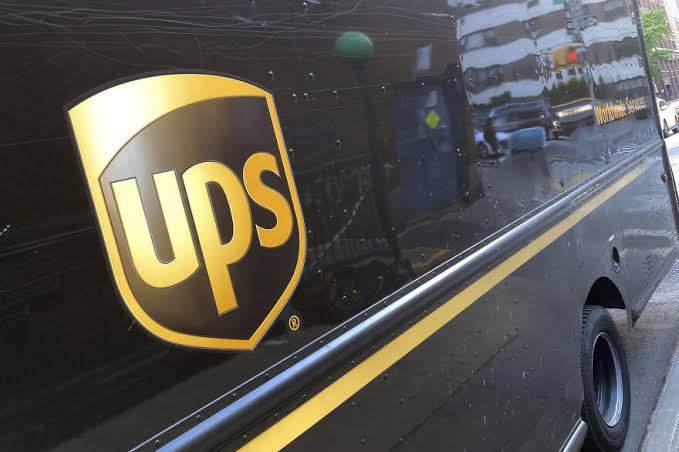
UPS Earnings and Financial Motivations
Analyzing UPS’s recent financial statements provides insight into why the company is implementing significant layoffs in 2025. The company’s financial health is a critical factor in understanding the motivations behind these workforce reductions.
Recent Quarterly Performance Analysis
UPS’s recent quarterly earnings report revealed a complex financial landscape. The company has been navigating through a period of significant change, with its revenue and profit margins being affected by various market factors. Despite these challenges, UPS remains a dominant player in the logistics industry.
Key Financial Highlights:
| Quarter | Revenue (Billion $) | Net Income (Billion $) |
|---|---|---|
| Q1 2024 | 21.3 | 1.7 |
| Q2 2024 | 22.1 | 1.9 |
| Q3 2024 | 21.8 | 1.8 |
Shareholder Expectations and Pressures
Shareholders play a crucial role in UPS’s decision-making process, particularly when it comes to financial performance and strategic planning. The company faces pressure to maintain profitability and satisfy shareholder expectations. The layoffs are part of a broader strategy to enhance operational efficiency and improve financial returns.

Cost-Cutting Strategies Beyond Layoffs
While layoffs are a significant component of UPS’s cost-cutting measures, they are not the only strategy being implemented. The company is also focusing on other areas such as operational streamlining, technology investment, and renegotiation of contracts to achieve its financial goals. UPS expects to realize $3.5 billion in cost savings from its Network Reconfiguration efforts in 2025, underscoring the company’s commitment to enhancing its financial performance.
Amazon’s Financial Considerations
In a move that reflects broader economic trends, Amazon is adjusting its financial footing through strategic restructuring. As the company navigates the complexities of the current market, its financial decisions are under scrutiny, particularly the recent layoffs announced as part of a broader effort to optimize operations.
Amazon’s CEO, Andy Jassy, stated that the layoffs are part of a “restructuring strategy to prioritize core business segments.” This indicates a significant shift in how Amazon is approaching its financial management, focusing on areas that promise higher returns on investment.
Profit Margins and Growth Challenges
Amazon’s profit margins have been under pressure due to various factors, including increased competition and rising operational costs. The company’s growth, while still robust, is facing challenges that necessitate a careful examination of its cost structure. As noted by industry analysts, “the key to maintaining profitability lies in balancing growth initiatives with cost control measures.”
The e-commerce giant is not alone in facing these challenges; however, its scale and influence make its financial decisions particularly noteworthy. Amazon’s approach to addressing these challenges includes a thorough review of its workforce and operational efficiencies.
Investment Priorities Shifting Away from Workforce
As Amazon navigates its financial landscape, there is a noticeable shift in investment priorities. The company is increasingly focusing on technology and innovation, areas that are seen as critical for long-term success. This shift is reflected in the recent layoffs, which, while significant, are part of a broader strategy to reallocate resources to more strategic areas.
Balancing Innovation and Cost Control
One of the key challenges Amazon faces is balancing the need for innovation with the imperative of cost control. As the company invests in new technologies and business areas, it must also ensure that these investments yield tangible returns. As Amazon’s financial reports indicate, “the company is committed to driving innovation while maintaining a disciplined approach to cost management.”
By focusing on core business segments and leveraging technology, Amazon aims to navigate the current financial landscape effectively. The outcome of these strategies will be closely watched by investors and industry observers alike.
Technological Disruption in Logistics and Delivery
Innovations in automation and AI are reshaping the future of logistics. The industry is witnessing a significant transformation driven by technological advancements, changing how companies like UPS and Amazon operate.
Automation Replacing Human Workers
The increasing use of automation is a key factor in the recent layoffs at UPS and Amazon. UPS is relying more on hubs with automated sortation processes, which currently handle about 64% of UPS’ volume. This shift towards automation is not only improving efficiency but also reducing the need for manual labor.
Warehouse Automation Technologies
Warehouse automation technologies are becoming more sophisticated, enabling faster and more accurate processing of packages. These technologies include robotic pickers and automated storage and retrieval systems.
Last-Mile Delivery Innovations
Last-mile delivery is also seeing significant innovations, with the use of drones and autonomous vehicles being explored by companies like Amazon. These technologies promise to reduce delivery times and costs.
AI and Machine Learning Applications
AI and machine learning are being applied in various aspects of logistics, from predictive analytics to route optimization. These technologies help companies to streamline their operations and improve customer satisfaction.
The impact of technological disruption in logistics is multifaceted. To illustrate this, let’s examine some key statistics:
| Technology | Current Adoption | Projected Impact |
|---|---|---|
| Warehouse Automation | 64% of UPS volume | 30% increase in efficiency |
| AI in Logistics | 40% of companies | 25% reduction in costs |
| Last-Mile Delivery Innovations | 20% adoption rate | 40% decrease in delivery times |

The future of logistics will be shaped by continued technological advancements. As companies like UPS and Amazon continue to invest in automation and AI, the industry is likely to see significant changes in the coming years.
The UPS Amazon Jobs Connection: Competitive Dynamics
As Amazon expands its in-house delivery capabilities, the competitive dynamics between UPS and Amazon are shifting. This change is significantly impacting the logistics landscape, particularly in terms of ups amazon jobs.
How Amazon’s In-House Delivery Affects UPS
Amazon’s move to bolster its in-house delivery network is directly affecting UPS. With Amazon handling more of its deliveries, UPS is facing a reduction in its business with the e-commerce giant. In fact, UPS plans to slash in half the volume of packages it delivers for Amazon by the middle of 2026. This reduction will inevitably lead to job cuts within UPS, as the company adjusts to the loss of a significant client.
The impact on UPS is not just about the volume of packages; it’s also about the strategic shift in how Amazon approaches its delivery needs. By expanding its in-house capabilities, Amazon is gaining more control over its logistics, potentially reducing its reliance on third-party delivery services like UPS.
Shifting Business Relationships and Contracts
The changing dynamics between UPS and Amazon also involve shifting business relationships and contracts. As Amazon becomes more self-sufficient in its delivery operations, it may renegotiate or terminate contracts with logistics companies like UPS. This shift could lead to a significant change in the competitive dynamics within the logistics industry.
For UPS, this means not only losing business but also facing the challenge of adapting to a new competitive landscape. The company will need to diversify its client base and potentially explore new markets to offset the loss of Amazon’s business.
The evolving relationship between UPS and Amazon highlights the complex interplay between major players in the logistics sector. As the landscape continues to shift, understanding these competitive dynamics will be crucial for industry stakeholders.
Employee Perspectives on the UPS 20,000 Jobs Reduction
The UPS 20,000 jobs reduction has sparked a mix of emotions among employees, from anxiety to uncertainty about their career paths. As the logistics giant navigates through significant restructuring, the human element of this decision cannot be overlooked.

Worker Reactions and Concerns
Employees are reacting to the news with a range of emotions. Many are concerned about their immediate future, wondering how they will support their families or what new opportunities might be available to them. The uncertainty surrounding the layoffs has created an atmosphere of anxiety among the workforce.
Job security has become a significant concern, with many employees expressing fears about their ability to find new employment in a competitive job market. The emotional toll of these layoffs should not be underestimated, as they affect not just the individuals but also their families and communities.
Union Responses to the Cuts
The Teamsters Union, which represents UPS workers, has been vocal about the job cuts. They have expressed concerns about the impact of these layoffs on their members and the broader community. The union has cited the recent labor contract, which included significant wage increases, as a point of contention in the context of the current layoffs.
The union’s response highlights the complex dynamics at play, including the balance between the company’s need to restructure and the workers’ rights and expectations. The union is likely to play a crucial role in negotiations and support for affected employees.
Support Systems for Affected Employees
UPS has announced plans to provide support to the employees who will be leaving the company. This includes outplacement services and severance packages aimed at easing the transition for affected workers. The specifics of these support systems are crucial in determining how smoothly employees can move on to new opportunities.
The effectiveness of these measures will depend on their implementation and the resources made available to employees. It remains to be seen how these support systems will be received by the workforce and whether they will adequately address the challenges faced by those losing their jobs.
Industry-Wide Implications of Major Logistics Layoffs
The layoffs at UPS and Amazon are likely to have far-reaching consequences across the logistics and e-commerce landscape. As these companies undergo significant workforce reductions, the entire industry is poised for a substantial shift.
Ripple Effects Throughout Logistics and E-commerce
The reduction in workforce at UPS and Amazon will likely lead to a cascade of effects across the logistics and e-commerce sectors. Other companies in the industry may need to adjust their strategies in response to the changing landscape. For instance, competitors may need to reassess their pricing strategies or invest in technology to remain competitive.
| Company | Layoff Numbers | Projected Impact |
|---|---|---|
| UPS | 20,000 | Significant restructuring |
| Amazon | Not Specified | Operational efficiency |
| FedEx | N/A | Potential market share gain |
Competitor Responses and Positioning
Competitors of UPS and Amazon are likely to respond to these layoffs by reevaluating their own business strategies. Some may look to capitalize on the situation by offering more competitive pricing or improved services. Others might focus on investing in automation and technology to enhance their operational efficiency.

In conclusion, the layoffs at UPS and Amazon are set to have a profound impact on the logistics and e-commerce industries, prompting competitor responses and potentially reshaping the industry’s future.
Historical Context: Previous UPS and Amazon Layoffs
Understanding the historical context of layoffs at UPS and Amazon provides valuable insights into their current restructuring efforts. Both companies have navigated through various economic cycles, technological advancements, and market demands, often resulting in workforce adjustments.
UPS Restructuring Patterns Over the Decades
UPS has a history of restructuring to adapt to changing market conditions. In the late 1990s, UPS underwent significant changes with the introduction of new technologies and the expansion of its global network. This period saw both growth and restructuring efforts, including layoffs in certain divisions to optimize operations.
In the 2000s, UPS continued to evolve, with a focus on automating processes and enhancing efficiency. While this brought about productivity gains, it also led to workforce reductions in areas where automation replaced human labor.
Amazon’s History of Workforce Adjustments
Amazon, since its early days, has experienced rapid growth, punctuated by periods of restructuring. In 2014, Amazon announced a significant restructuring of its fulfillment network, which included layoffs as the company adapted to changing consumer demands and technological advancements.
More recently, Amazon has continued to adjust its workforce in response to the evolving e-commerce landscape and the integration of new technologies such as AI and robotics in its operations. These adjustments have sometimes involved reducing workforce in certain areas while expanding in others.
By examining the historical context of layoffs at UPS and Amazon, it becomes clear that both companies have long been navigating the challenges of technological change, market fluctuations, and operational efficiency. The 2025 layoffs are part of this ongoing narrative, reflecting the companies’ efforts to stay competitive in a rapidly evolving logistics and e-commerce landscape.
Expert Analysis on the Future of Logistics Employment
As UPS and Amazon undergo significant layoffs, industry analysts are weighing in on the future of logistics employment. The logistics sector is experiencing a significant transformation driven by technological advancements, changing consumer demands, and economic pressures.
Industry experts believe that the trend of layoffs in major logistics companies is a precursor to a broader industry shift. Automation and AI are increasingly being adopted to streamline operations and reduce costs.
Industry Analyst Perspectives
Analysts from leading industry research firms have offered insights into the implications of these layoffs on the future of logistics employment. According to a recent report, the adoption of automation technologies is expected to accelerate in the coming years, potentially displacing certain job roles while creating new ones that require specialized skills.
Moreover, industry analysts emphasize that companies like UPS and Amazon are not just cutting costs but are also restructuring their workforces to invest in more strategic areas. This includes enhancing their technological capabilities and improving operational efficiencies.
Long-Term Job Market Predictions
Looking ahead, the job market in the logistics sector is expected to undergo significant changes. While automation may replace some jobs, it is also anticipated to create new opportunities in areas such as AI development, data analytics, and robotics maintenance.
The long-term predictions suggest that logistics employment will require a more skilled and adaptable workforce. As the industry continues to evolve, workers will need to acquire new skills to remain relevant in the job market.
Strategies for Workers Navigating the Changing Landscape
With the ongoing layoffs at UPS and Amazon, the need for strategic skill development in the logistics sector has become paramount. Workers must adapt to the evolving demands and technological advancements in the industry.
Skill Development for the Evolving Logistics Sector
The logistics industry is rapidly changing due to technological advancements and shifting market demands. To remain relevant, workers must focus on acquiring new skills.
Technical Skills in Demand
Technical skills are becoming increasingly important in the logistics sector. Skills such as data analysis, digital literacy, and familiarity with logistics software are in high demand. Workers should consider developing these skills to enhance their employability.
Soft Skills for Career Transition
In addition to technical skills, soft skills play a crucial role in career transition. Skills such as problem-solving, communication, and adaptability are essential for workers looking to transition into new roles within or outside the logistics sector.
Alternative Career Paths for Displaced Workers
For workers displaced due to layoffs, exploring alternative career paths is a viable strategy. Many skills acquired in the logistics sector are transferable to other industries.
| Skill | Logistics Application | Alternative Industry Application |
|---|---|---|
| Data Analysis | Analyzing delivery routes and times | Financial analysis in banking |
| Project Management | Managing logistics projects | Managing projects in construction |
| Communication | Coordinating with delivery teams | Customer service in retail |
By focusing on skill development and exploring alternative career paths, workers can navigate the changing logistics landscape effectively.
Conclusion: The Reshaping of America’s Delivery Giants
The UPS and Amazon layoffs mark a significant shift in the logistics industry, driven by technological advancements and changing consumer demands. As these companies navigate the evolving landscape, the impact on their workforce and the broader industry is substantial.
The UPS layoffs and Amazon workforce reductions signal a new era in logistics, where efficiency and automation are becoming increasingly important. While this transformation presents challenges for affected employees, it also creates opportunities for growth and innovation in the sector.
As the logistics industry continues to adapt, companies like UPS and Amazon are at the forefront of this change. Their efforts to streamline operations and invest in emerging technologies will likely shape the future of delivery and logistics services in the United States.
The implications of these layoffs extend beyond the companies themselves, influencing the wider logistics industry and the economy as a whole. As the industry continues to evolve, understanding the dynamics at play will be crucial for stakeholders across the logistics and e-commerce sectors.
FAQ
What is driving the UPS layoffs in 2025?
The UPS layoffs in 2025 are driven by a combination of economic factors, including post-pandemic market adjustments, e-commerce trends, and competitive pressures in the logistics sector.
How many jobs are being cut at UPS in 2025?
UPS is cutting 20,000 jobs in 2025 as part of its restructuring efforts.
Is Amazon also undergoing layoffs?
Yes, Amazon is also undergoing workforce reductions, although the exact number of jobs being cut is not specified.
How will the UPS layoffs affect the logistics industry?
The UPS layoffs are expected to have ripple effects throughout the logistics industry, with potential impacts on competitor companies and the broader job market.
What are the main economic factors driving the layoffs at UPS and Amazon?
The main economic factors driving the layoffs include post-pandemic market adjustments, e-commerce trends, and competitive pressures in the logistics sector.
How will the UPS layoffs impact the company’s earnings?
The UPS layoffs are expected to improve the company’s earnings by reducing labor costs and improving operational efficiency.
What role is technology playing in the layoffs at UPS and Amazon?
Technological disruption, including automation, AI, and machine learning applications, is contributing to the layoffs by increasing efficiency and reducing the need for human workers.
How will the layoffs affect Amazon’s profit margins?
The layoffs are expected to help Amazon improve its profit margins by reducing labor costs and improving operational efficiency.
What support systems are in place for employees affected by the UPS layoffs?
UPS is providing support systems for affected employees, although the specific details of these systems are not specified.
How will the layoffs impact the competitive dynamics between UPS and Amazon?
The layoffs are expected to impact the competitive dynamics between UPS and Amazon, with potential shifts in business relationships and contracts.
What are the long-term implications of the layoffs for the logistics industry?
The layoffs are expected to have long-term implications for the logistics industry, including changes in the job market and the competitive landscape.


































